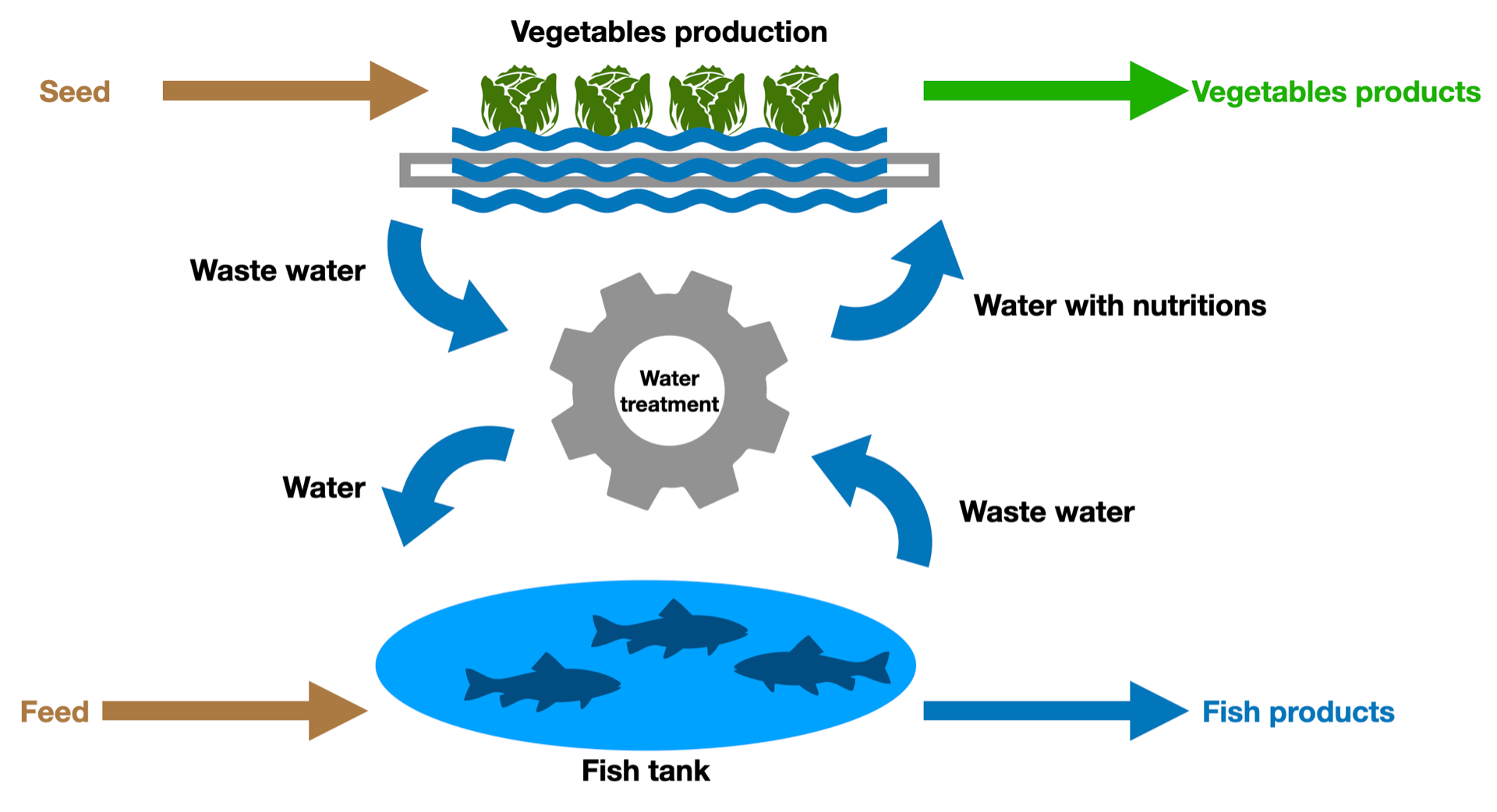
Aquaponics is a modern, innovative and sustainable food production system combining fish farming (aquaculture) and vegetable growing (hydroponics). It is a symbiotic relationship among fish, vegetable and bacteria. The bacteria plays an important role in an aquaponics system because it converts waste from fish farming into nutrients usable for plant growth and thus bring a significant synergistic effect.
The water in tanks where the fish are kept is rich in nutrients and is used as a source of organic fertilizer for growing plants. After water treatment by denitrification, plants can naturally use nutrients from water as building and vital substances for their growth and the creation of new biomass. Aquaponics is a well-thought-out recirculation system using CEA (Control Environment Agriculture). This means that it is independent on weather, climatic conditions and seasonality. All parameters associated with growth and breeding are constantly checked and monitored, thus eliminating the risk of losses. This technology ensures year-round production without the need for artificial pesticides, herbicides or other chemicals. The result is a maximally fresh, safe and high-quality product from a local source that is both sustainable and environment friendly.